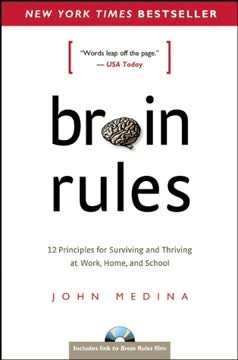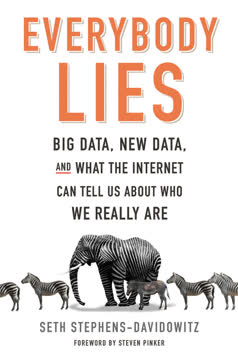Key Takeaways
1. PR builds brands, advertising maintains them
"Advertising is not brand building. That's the role and function of PR. Advertising is brand maintenance."
PR creates, advertising protects. Public relations is the primary tool for establishing a brand in the consumer's mind. It generates credibility through third-party endorsements and media coverage. Once a brand is established, advertising takes over to reinforce the brand's position and protect it from competitors.
Examples abound. Microsoft, Starbucks, Amazon, and Google built their brands primarily through PR. Even traditionally advertising-heavy industries like beer have seen PR successes like Red Bull, which became a global phenomenon with minimal initial advertising.
The transition is key. Successful brands often start with PR and transition to advertising once they've gained traction. This allows them to build credibility first, then use advertising to maintain their position and remind consumers of their established brand identity.
2. Credibility is key: PR has it, advertising lacks it
"Advertising has no credibility. It's the self-serving voice of a company anxious to make a sale."
Trust matters most. Consumers are inherently skeptical of advertising because they perceive it as biased and self-serving. PR, on the other hand, leverages third-party credibility through media coverage, expert opinions, and word-of-mouth.
The credibility gap is widening. As advertising volume increases, its effectiveness decreases. Consumers are bombarded with thousands of ads daily, leading to ad fatigue and increased skepticism. PR messages, delivered through trusted sources, cut through this clutter.
Credibility translates to action. When consumers hear about a brand through PR channels, they're more likely to believe the message and act on it. This is why PR-driven brand launches often see faster adoption and stronger customer loyalty compared to advertising-driven launches.
3. The power of being first in a new category
"You can't get famous if you're not first in something."
Create your niche. The most effective way to build a brand is to create a new category and be the first to claim it. This gives you a significant advantage in media coverage and consumer mindshare.
Examples of category pioneers:
- Red Bull: First energy drink
- Amazon: First online bookstore
- Gatorade: First sports drink
- BlackBerry: First mobile email device
PR amplifies first-mover advantage. Being first in a category naturally generates news, making it easier to secure media coverage and build brand awareness through PR. This initial publicity is often more valuable than any advertising campaign could be.
4. Slow and steady wins the race in brand building
"Brand building is slow, patient, methodical work. It takes several decades, goes the old saying, to become an overnight success."
Time is essential. Building a strong brand typically takes years, even decades. This is because it takes time for consumers to develop trust and familiarity with a brand.
The rollout strategy matters. Successful brands often start small, generating publicity in niche publications before expanding to larger media outlets. This gradual approach allows the brand to build credibility and refine its message over time.
Examples of slow builds:
- Wal-Mart: Took decades to become a retail giant
- Starbucks: Grew slowly from a single Seattle store
- Red Bull: Spent years building buzz before becoming a global phenomenon
5. Line extensions dilute brand power and publicity potential
"The more products you hang on a brand name, the weaker the brand name becomes."
Focus breeds strength. When a brand tries to be everything to everyone, it loses its distinctive identity and media appeal. Narrowly focused brands are easier to publicize and tend to dominate their categories.
Line extensions can backfire. While they may seem like a way to leverage brand equity, line extensions often:
- Confuse consumers
- Reduce media interest
- Dilute the brand's core message
- Make advertising less effective
Success stories of focused brands:
- Volvo: Safety
- FedEx: Overnight delivery
- Starbucks: Premium coffee experience
6. The right name is crucial for brand success
"Nothing in marketing can succeed unless the name is right."
Names shape perceptions. A brand's name is its first and most frequent point of contact with consumers. It must be:
- Memorable
- Appropriate for the category
- Easy to pronounce and spell
- Distinctive from competitors
Avoid generic or descriptive names. These are harder to protect legally and less likely to generate publicity. Instead, choose names that suggest the brand's key benefit or position.
Examples of powerful names:
- BlackBerry: Suggests small, portable device
- Duracell: Implies long-lasting battery
- Lexus: Sounds luxurious and distinctive
7. Celebrity spokespersons amplify PR effectiveness
"Products don't create publicity. People do."
Humanize your brand. A well-chosen spokesperson, often the CEO or founder, gives media a human face to associate with the brand. This makes it easier to generate news coverage and build personal connections with consumers.
Characteristics of effective spokespersons:
- Credibility in the brand's field
- Charisma and media savvy
- Alignment with brand values
- Willingness to be the public face of the brand
Success stories:
- Steve Jobs for Apple
- Richard Branson for Virgin
- Elon Musk for Tesla and SpaceX
8. Advertising should reinforce, not recreate brand perceptions
"Advertising cannot change minds. Advertising cannot move brands from one position to another inside a mind."
Consistency is key. Once a brand has established its position through PR, advertising should reinforce that existing perception rather than trying to create a new one.
Advertising's role:
- Remind consumers of the brand's core benefits
- Protect the brand's position from competitors
- Deepen the market by emphasizing the importance of the brand's key attributes
Examples of reinforcing advertising:
- Volvo's continued focus on safety
- Coca-Cola's "The Real Thing" campaign
- FedEx's emphasis on reliability and speed
9. PR creates news, advertising cannot
"The media only wants to print what is new, not what is better."
Newsworthiness is essential. PR thrives on creating stories that are genuinely interesting to the media and their audiences. This often involves:
- Launching new categories or products
- Revealing surprising facts or statistics
- Connecting the brand to current trends or issues
Advertising lacks news value. Because it's paid content, advertising is inherently less newsworthy. It can't generate the same level of credibility or interest as a well-crafted PR story.
PR strategies for creating news:
- Be the first in a new category
- Conduct and release original research
- Tie the brand to current events or social issues
- Create events or stunts that generate media interest
Last updated:
FAQ
1. What is "The Fall of Advertising & the Rise of PR" by Al Ries about?
- Core Premise: The book argues that traditional advertising has lost its effectiveness in building brands, while public relations (PR) has become the primary driver of brand creation and growth.
- Advertising vs. PR: Al Ries and Laura Ries detail how advertising is now best used for maintaining established brands, whereas PR is essential for launching and building new brands.
- Historical Context: The authors compare the shift from advertising to PR to other historical changes, such as the rise of photography over painting as a means of representation.
- Practical Guidance: The book provides a roadmap for companies to shift their marketing strategies from an advertising-first to a PR-first approach.
2. Why should I read "The Fall of Advertising & the Rise of PR" by Al Ries?
- Challenging Conventional Wisdom: The book questions the long-held belief that advertising is the main tool for building brands, offering a fresh perspective for marketers and business leaders.
- Real-World Examples: It uses numerous case studies (e.g., Starbucks, Red Bull, Microsoft, Amazon) to illustrate how PR, not advertising, was key to their success.
- Actionable Strategies: Readers gain practical advice on how to launch, build, and maintain brands using PR, and when to use advertising effectively.
- Industry Relevance: The book is especially valuable for those in marketing, PR, entrepreneurship, and business strategy, as it addresses current challenges in a saturated media environment.
3. What are the key takeaways from "The Fall of Advertising & the Rise of PR" by Al Ries?
- PR Builds, Advertising Maintains: Brands are best built through PR and maintained through advertising, not the other way around.
- Credibility is Crucial: PR has credibility because it leverages third-party endorsements, while advertising is seen as self-serving and less believable.
- Creativity in the Right Place: Creativity should be focused on PR to generate newsworthy stories, not on making advertising more entertaining or shocking.
- Line Extensions and Names Matter: New brands and categories are more likely to succeed with unique names and PR support, rather than as line extensions supported by advertising.
4. How does Al Ries define the main differences between advertising and PR in "The Fall of Advertising & the Rise of PR"?
- Function: Advertising is best for brand maintenance; PR is for brand building.
- Credibility: PR is perceived as more credible due to third-party validation, while advertising is often distrusted.
- Approach: Advertising is spatial, visual, and uses the "big bang" approach; PR is linear, verbal, and relies on a slow buildup.
- Cost and Reach: Advertising is expensive and tries to reach everyone; PR is less costly and targets influential audiences who spread the message.
5. What is the main argument against using advertising to launch new brands, according to "The Fall of Advertising & the Rise of PR"?
- Lack of Credibility: Consumers are skeptical of advertising claims, especially for unknown brands, making it ineffective for launches.
- Over-Saturation: The sheer volume of advertising has made it background noise, reducing its impact and memorability.
- Ineffective Creativity: Creative or entertaining ads may win awards but often fail to drive sales or brand loyalty.
- PR's Advantage: PR leverages media coverage and third-party endorsements, which are more likely to be trusted and remembered by consumers.
6. How does "The Fall of Advertising & the Rise of PR" by Al Ries recommend launching a new brand?
- Start with PR: Use publicity to generate media coverage and third-party endorsements before spending on advertising.
- Create a New Category: Position the brand as the first in a new category to attract media interest and avoid direct competition.
- Develop a Strong Name: Choose a unique, memorable name that supports the new category and is easy for the media to use.
- Leverage a Spokesperson: Use a credible, ideally high-profile, spokesperson (often the CEO or founder) to humanize and promote the brand.
7. What are some real-world examples from "The Fall of Advertising & the Rise of PR" that illustrate the power of PR over advertising?
- Starbucks: Built its brand with virtually no advertising, relying on word-of-mouth and media stories about its unique coffee experience.
- Red Bull: Became a global leader in energy drinks through PR and event marketing, not traditional ads.
- Microsoft: Achieved brand dominance through extensive media coverage of its products and Bill Gates, not through memorable ads.
- Amazon.com: Used PR to communicate its 30% discount on books, which was picked up by the media and spread rapidly.
8. What are the dangers of focusing on creativity and awards in advertising, according to Al Ries?
- Misplaced Priorities: Agencies often prioritize winning creative awards over driving sales or building the brand.
- Disconnect with Consumers: Highly creative ads may entertain but fail to communicate the brand’s value or motivate purchases.
- Short-Term Buzz, Not Long-Term Growth: Campaigns like Budweiser’s “Whassup?” and Nike’s “Just Do It” generated talk value but did not necessarily translate into increased sales.
- Lack of Measurable Results: Award-winning ads are rarely evaluated on effectiveness or ROI, leading to wasted budgets.
9. How does "The Fall of Advertising & the Rise of PR" address the issue of line extensions and brand naming?
- Line Extensions Dilute Brands: Extending a brand name to new categories (e.g., Coca-Cola’s KMX, IBM PC) often confuses consumers and dampens PR potential.
- New Brands Get More PR: Launching a new brand with a unique name (e.g., Lexus, Saturn, PlayStation) attracts more media attention and consumer interest.
- Naming Matters: The right name can make or break a brand’s PR success; names should be memorable, category-appropriate, and easy to pronounce.
- Avoid Generic or Confusing Names: Names like Accenture or Kiwi Airlines lack story value and hinder PR efforts.
10. What is the recommended role of advertising in brand strategy, according to "The Fall of Advertising & the Rise of PR"?
- Brand Maintenance: Use advertising to reinforce and remind consumers of a brand’s established position, not to create new perceptions.
- Consistency with PR: Advertising should echo the themes and perceptions established by earlier PR efforts.
- Defensive Tool: Advertising acts as insurance to protect a brand from competitors once it is established.
- Avoid Changing Perceptions: Advertising is ineffective at changing entrenched consumer perceptions; it should deepen, not broaden, a brand’s position.
11. What are the 14 key differences between advertising and PR as outlined in "The Fall of Advertising & the Rise of PR"?
- Wind vs. Sun: Advertising is forceful and resisted; PR is gentle and persuasive.
- Spatial vs. Linear: Advertising is a one-time, multi-channel push; PR unfolds over time.
- Big Bang vs. Slow Buildup: Advertising launches with a splash; PR builds momentum gradually.
- Visual vs. Verbal: Advertising relies on images; PR relies on words and stories.
- Reaches Everybody vs. Somebody: Advertising targets the masses; PR targets influencers.
- Self-Directed vs. Other-Directed: Advertising is company-controlled; PR is media-driven.
- Dies vs. Lives: Ads are short-lived; PR stories can be referenced for years.
- Expensive vs. Inexpensive: Advertising costs more; PR is more cost-effective.
- Favors Line Extensions vs. New Brands: Advertising supports extensions; PR supports new brands.
- Likes Old Names vs. New Names: Advertising prefers established names; PR thrives on new ones.
- Funny vs. Serious: Advertising often uses humor; PR is more serious and credible.
- Uncreative vs. Creative: Advertising should be unoriginal and reinforcing; PR should be creative and newsworthy.
- Incredible vs. Credible: Advertising lacks credibility; PR is trusted.
- Brand Maintenance vs. Brand Building: Advertising maintains; PR builds.
12. What are the best quotes from "The Fall of Advertising & the Rise of PR" by Al Ries, and what do they mean?
- "Advertising is the wind. PR is the sun." – PR gently influences and persuades, while advertising tries to force its way into the consumer’s mind, often with less success.
- "You can’t build a brand if you can’t win the battle for the mind." – The ultimate goal is to establish a strong, favorable perception in the consumer’s mind, which PR is better equipped to achieve.
- "Advertising is not brand building. That’s the role and function of PR. Advertising is brand maintenance." – This encapsulates the book’s central thesis: use PR to create, advertising to sustain.
- "Creativity doesn’t belong in the advertising department; creativity belongs in the PR department." – The book argues that originality and newsworthiness should be focused on PR, not on making ads more entertaining.
- "A brand is a perception in the prospect’s mind." – Success depends on shaping perceptions, which is best accomplished through credible, third-party PR rather than self-serving advertising.
Review Summary
The Fall of Advertising and the Rise of PR presents a controversial thesis that PR is more effective than advertising for brand building. Readers found the book's arguments compelling but repetitive, with outdated examples and predictions. Some appreciated the insights on PR's role in creating brand credibility, while others felt the criticism of advertising was overstated. The book's core message resonated with many marketing professionals, despite its flaws. Overall, readers considered it a thought-provoking read for those interested in marketing and communications.
Similar Books










Download PDF
Download EPUB
.epub digital book format is ideal for reading ebooks on phones, tablets, and e-readers.








